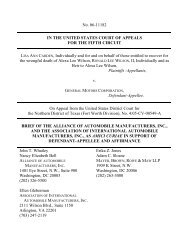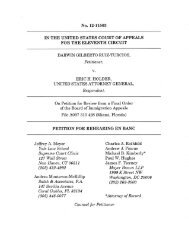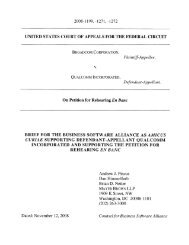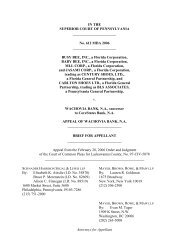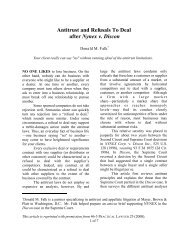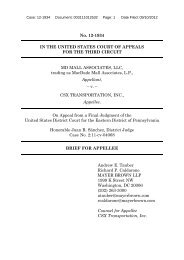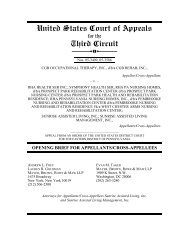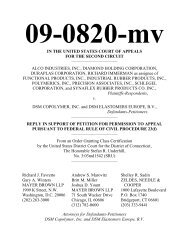No. 5-99-0830 IN THE APPELLATE COURT OF ... - Appellate.net
No. 5-99-0830 IN THE APPELLATE COURT OF ... - Appellate.net
No. 5-99-0830 IN THE APPELLATE COURT OF ... - Appellate.net
Create successful ePaper yourself
Turn your PDF publications into a flip-book with our unique Google optimized e-Paper software.
fenders to its pre-loss condition. See Bellefonte Ins. Co. v. Griffin, 358 So.2d 387, 390<br />
(Miss. 1978) (policy requiring payment for “like kind and quality” parts contemplates an<br />
adjustment for depreciation of, and pre-accident damage to, the original part). And if a non-<br />
OEM part was already on the car as a result of a previous repair (see, e.g., R. 8300), it could<br />
not possibly be a per se breach of contract to specify a replacement that was also a non-OEM<br />
part. But, as plaintiffs’ own expert witnesses conceded, the only way to tell whether the<br />
parts State Farm had specified had been used to restore a vehicle to its pre-loss condition was<br />
to look at the actual pre-loss condition of the vehicle in question (R. 4927-28, 12182) — an<br />
exercise that would have been physically impossible to accomplish in a single trial of the<br />
claims of almost 5 million class members.<br />
In order to prove each class member’s breach of contract claim, plaintiffs faced the<br />
equally impossible task of establishing that each of the literally tens of thousands of different<br />
non-OEM repair parts State Farm specified was so inferior that it could not be used to restore<br />
a vehicle to its pre-loss condition. These parts were made by scores of different<br />
manufacturers over a more than ten-year period in plants all over the world. As a matter of<br />
commonsense, even if plaintiffs could have proved that certain class representatives or other<br />
members of the class had received defective non-OEM parts that failed to restore their<br />
particular vehicles to their pre-loss conditions, that would not prove that different parts,<br />
made by different manufacturers for cars of different makes, models, or years failed to<br />
restore other policyholders’ vehicles to their particular pre-loss conditions. 20/ Thus, contrary<br />
20/<br />
See, e.g., Johnson v. Ford Motor Co., 988 F.2d 573, 579-80 (5th Cir. 1<strong>99</strong>3) (plaintiff<br />
cannot prove defective joint assembly in 1983 Ford Escorts by offering evidence of defects<br />
in different Ford parts, different Ford models, or Ford Escorts manufactured in different<br />
-39-



